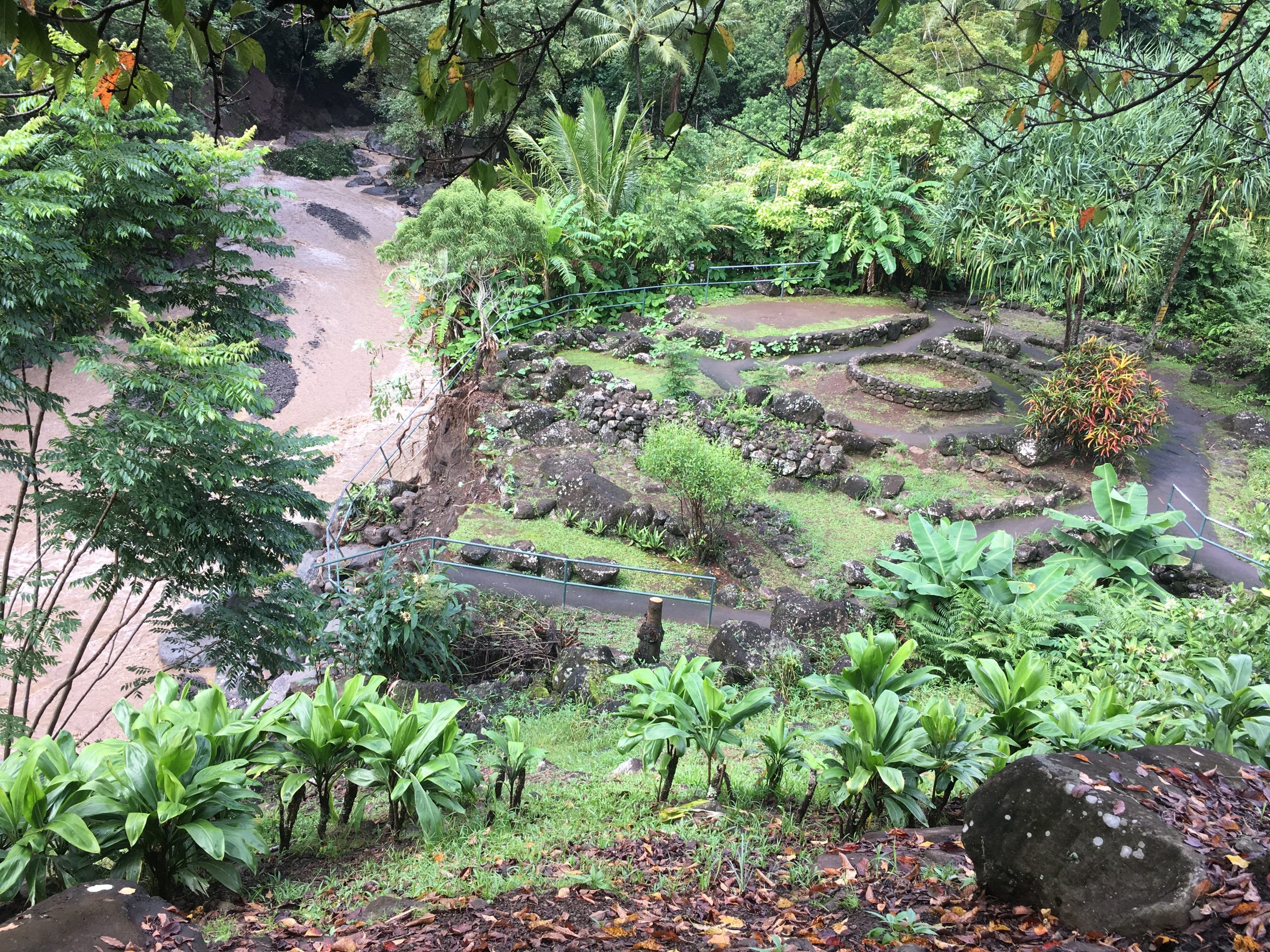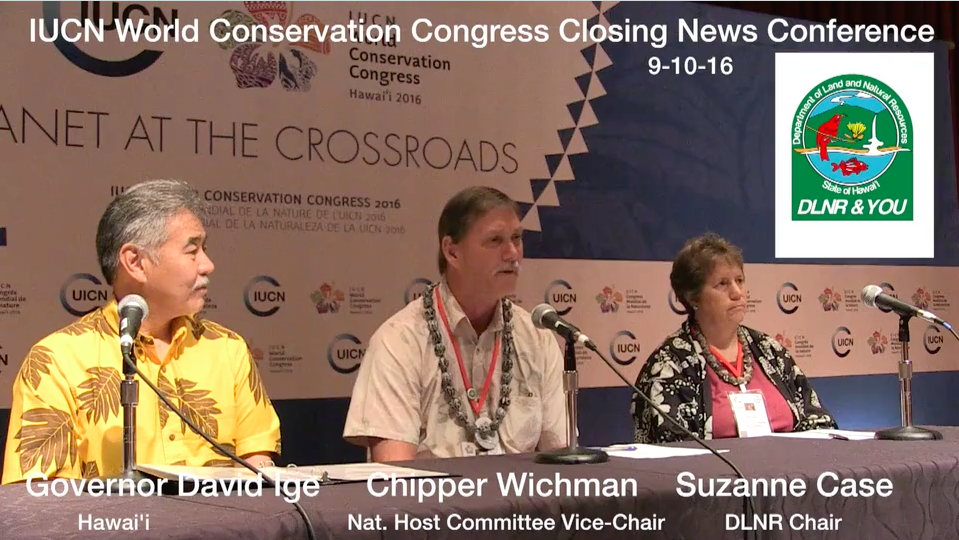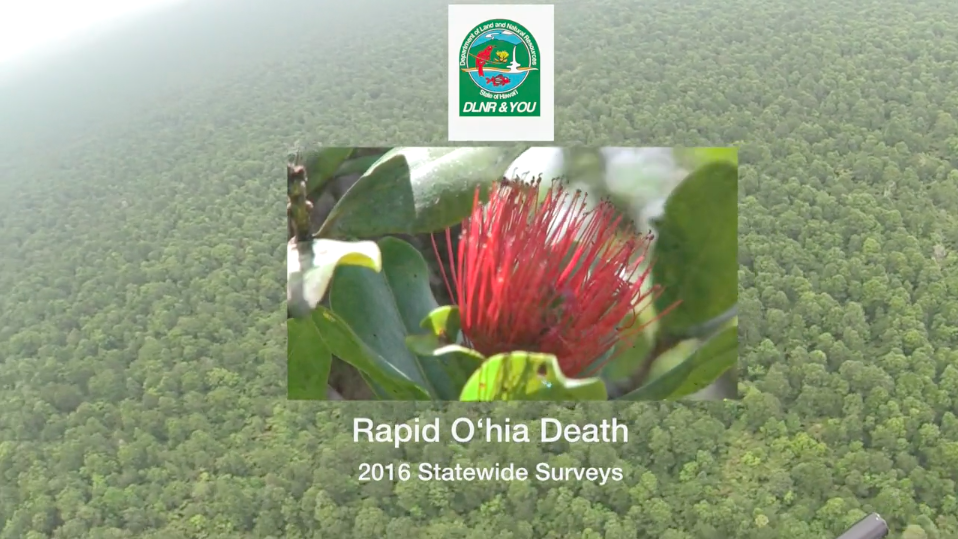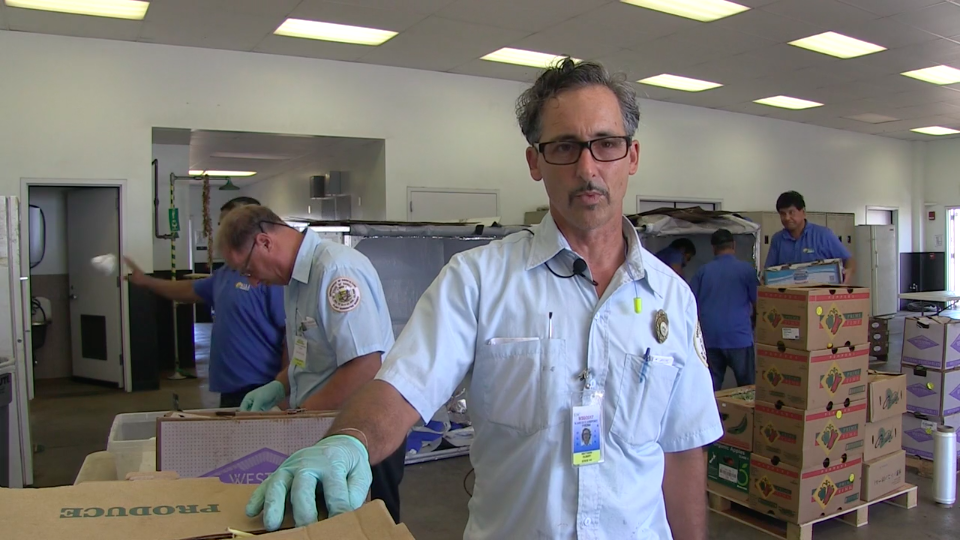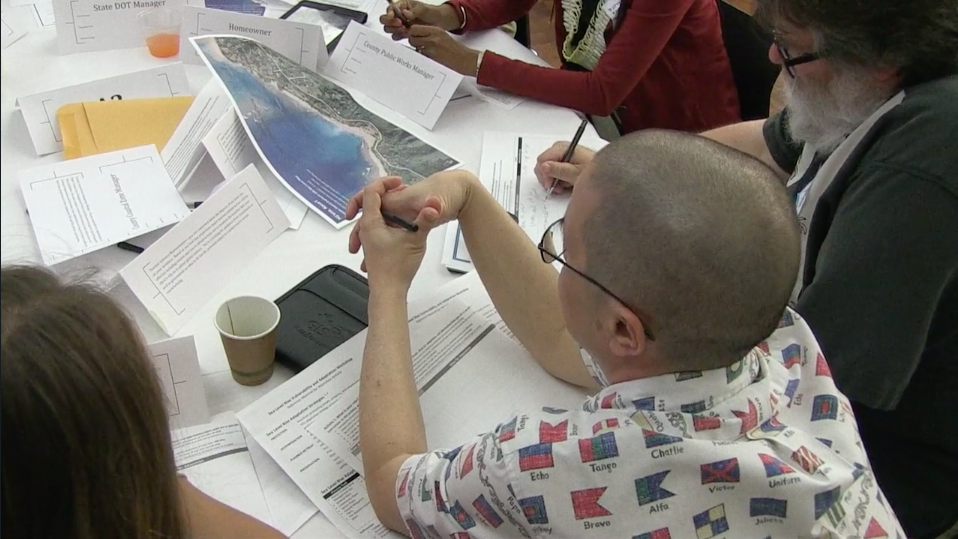WAILUKU, MAUI -- 'Iao Valley State Monument, Maui, will remain closed indefinitely due to extensive damage from heavy rain and flooding the night of September 13 and early morning on September 14, 2016. Notice of the park closure is posted at https://dlnr.hawaii.gov/dsp/
News Releases
(HONOLULU) – Over one billion dollars – that’s how much hunters and anglers contribute each year in the U.S. toward sport fish and wildlife restoration programs through taxes on their sport-related purchases. National Hunting and Fishing Day began in 1972 as a way for states to recognize the contributions of sportsmen and women in wildlife and sport fish conservation and restoration, hunter education and to the shooting sports.
(HONOLULU) – “Clearly Hawai‘i’s commitments to conservation and sustainability are aligned with the world’s priorities and with the strategic issues of importance to the International Union for Conservation of Nature (IUCN),” observed Governor David Ige, on this last day of the IUCN World Conservation Congress, Hawai‘i 2016. Thousands of delegates and members from 192 member countries spent the last ten days in Hawai‘i at the planet’s most important and high-level conservation gathering. Governor Ige deemed it a tremendous success and thanked the countless state and federal agencies, elected officials, conservation organizations, and volunteers who consistently spread the message: “What is clear now, more than ever before, is that we are in this together – one canoe navigating Island Earth.”
(Honolulu) – A series of aerial surveys of six Hawaiian Islands reveals that the fungal disease, known as Rapid ʻŌhiʻa Death has impacted nearly 50,000 acres of native forest on the Big Island of Hawai‘i. That’s an increase of some 13,000 acres from surveys done earlier in 2016. “It’s important to note that the aerial surveys still need verification by conducting ground-truthing and lab tests,” said Philipp Lahaela Walter, State Resource & Survey Forester for the DLNR Division of Forestry and Wildlife (DOFAW). While some of the increase is due to expanding the survey area, much of it is due to new tree mortality.
HONOLULU - Travelling past lush ‘a‘ali‘i and ‘aweoweo bushes, and under monkey pod and Christmas berry trees laden with liliko‘i vines, Angelica Stevens turns to smile as she explains the plans for her parents’ nine acre agriculture parcel in Kona.

09/08/16 – DLNR & YOU – State Implementing Management Strategies To Promote Coral Bleaching Recovery
(Honolulu) -- Following severe coral bleaching events in 2014 and 2015 within Hawai‘i’s ocean waters, the Department of Land and Natural Resources Division of Aquatic Resources (DAR) has been working to identify management actions that can be taken to promote post-coral bleaching recovery and resiliency in Hawai‘i’s coral reefs.
HONOLULU -- Hawai‘i is at an invasive species crossroads: the islands are home to more endangered species than any other state. Between 80-90% of all food is imported, and there are more than 8 million visitors annually, with hundreds of arriving flights and ships carrying cargo.
HONOLULU -- Beginning in October 2016 on O‘ahu, the Department of Land and Natural Resources Hunter Education Program will expand certification options for the public by offering a Hybrid Hunter Education Course which can be partially completed online. This Hybrid course will consist of two parts: (1) online course and (2) a one-day In-person conclusion course with final exam.

09/06/16 – DLNR & YOU – Building The Next Generation Of Conservation Leaders & Environmental Manager
(Honolulu) – You’ve probably seen them in their bright blue shirts out in the forest pulling weeds, planting native trees, restoring trails, or hiking up a mountain side. These are participants from Hawaii’s Youth Conservation Corps that are helping environmental agencies tackle today’s natural resource problems and care for Hawaii’s fragile ecosystems.
(Honolulu) - Climate change is anticipated to have profound effects in the Hawaiian Islands. Key indicators of the changing climate include rising carbon dioxide in the atmosphere, rising air and sea temperatures, rising sea levels and upper-ocean heat content, changing ocean chemistry and increasing ocean acidity, changing rainfall patterns, decreasing base flow in streams, changing wind and wave patterns, changing extremes, and changing habitats and species distributions.
